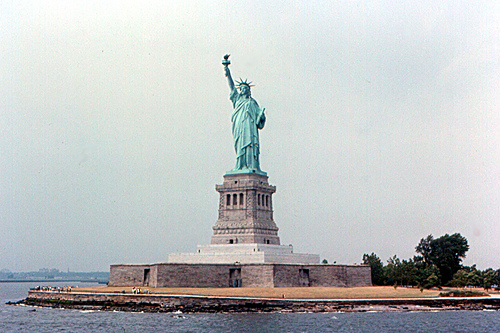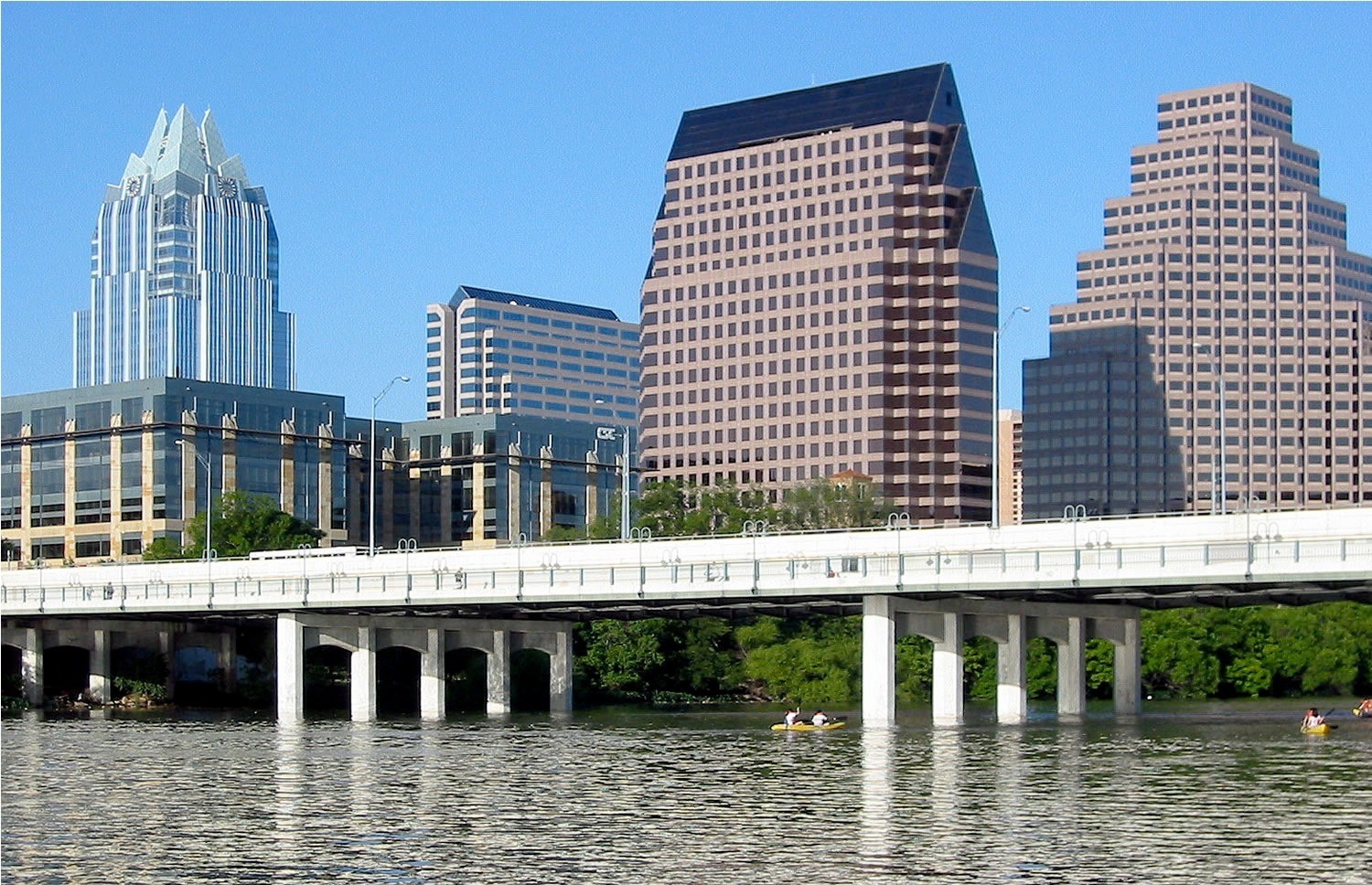Top Ten Monuments in the United States
In the United States there are more than 100 official National Monuments. Some National Monuments serve as national symbols, such as the Statue of Liberty, and others are places significant to the history of the country. The very first National Monument was established by President Theodore Roosevelt in 1906. Here are the top ten most visited national monuments:

10
Fort McHenry
Annual visitors: 605,870
Baltimore, Maryland
The unique star-shaped Fort McHenry located in Baltimore is best known for its defense against the British navy in the 1814 Battle of Baltimore. This specific victory inspired Francis Scott Key to write the poem which would later become known as “The Star-Spangled Banner.” The fort was made into a National Monument and Historic Shrine in 1939 making it the only doubly designated place in the United States. It is also the place where the first official 49 and 50 star American Flags were flown and are still located on the fort’s premises.
9
Castillo de San Marcos
Annual visitors: 667,783
St. Augustine, Florida
Castillo de San Marcos is the oldest masonry fort located in the continental United States. Construction began on the fort in 1672, 107 years after the city was founded by the Spanish Admiral and conquistador Pedro Menéndez de Avilés when Florida was part of the Spanish Empire. The fort wasn’t declared a National Monument until 1924 after it had seen 251 years of continuous military possession. The fort was officially deactivated in 1933.
8
Cabrillo National Monument
Annual visitors: 767,687
San Diego, California
The Cabrillo National Monument marks the spot where Juan Rodriguez Cabrillo climbed off his boat onto land in 1542. It was the first time a European had set foot on what is now the West Coast of the United States. In October of 1913, by presidential proclamation, Woodrow Wilson reserved 0.5 acres of Fort Rosecrans to construct a heroic statue of Juan Rodriguez Cabrillo. However, by 1926 no statue had been built and Woodrow’s proclamation had become defunct, so Calvin Coolidge authorized the Native Sons of the Golden Coast to erect a suitable monument. The statue ended up being built by sculptor Alvaro de Bree for the Portuguese Government in 1939 who in turn donated it to the United States.
7
Muir Woods
Annual visitors: 779,880
Mill Valley, California
Located roughly 12 miles north of San Francisco and part of the Golden Gate National Recreation Area, the Muir Woods protects 554 acres of Coast Redwoods. The overall refreshing climate attracts thousands of annual visitors. The forest is often classified as an old-growth coastal redwood forest. Due to its proximity to the ocean, the forest is often shrouded in a coastal marine layer fog contributing to a web environment which encourages rapid plant growth.
6
Fort Sumter
Annual visitors: 785,604
Charleston Harbor, South Carolina
Fort Sumter was the site upon which the shots that started the Civil War were fired at the Battle of Fort Sumter on April 12, 1861. The fort is located at the mouth of Charleston Harbor and is only accessible by boat. Named after General Thomas Sumter, a Revolutionary War hero, Fort Sumter was built following the War of 1812 as one of a number of fortifications on the southern U.S. coast. The fort was originally designed to house 650 men and up to 135 guns in three tiers of gun emplacements.
[adsense]
5
Fort Matanzas
Annual visitors: 793,253
St. Augustine, Florida
Fort Matanzas was designated as a National Monument is 1924. The world Matanzas translated into Spanish means “killings” or “slaughters.” The name is appropriate as it was the site where the Spanish massacred French soldiers during their 1565 efforts to colonize the area. The monument is located about 15 miles south of St. Augustine about halfway between Jacksonville and Daytona Beach. A short ferry ride takes visitors to the fort where they are free to explore a boardwalk, forest trail, or fish on the riverbank.
4
Canyon de Chelly
Annual visitors: 826,425
Arizona
Established in 1931, Canyon de Chelly are the ruins of indigenous Anasazi and Navajo tribes that sit against distinct rock formations. The National Monument is located about 250 miles away from Flagstaff. Unique among National Monuments, the monument sites entirely on Navajo Tribal Trust Land and sustains a community of Navajo people. According to Navajo religious beliefs, the 800-foot Spider Rock spire is believed to be the home of Spider Grandmother, the creator of the world. In total, the monument covers 83,840 acres and encompasses the floors and rims of three major canyons.
3
World War II Valor in the Pacific
Annual visitors: 1.75 million
Oahu, Hawaii
The World War II Valor in the Pacific is a National Monument which provides a somber glance into the attacks on Pearl Harbor which preceded the United State’s entrance into World War II. The monument was created as a result of an executive order by President George W. Bush in 2008 under the authority of the Antiquities Act of 1906. The memorial educates visitors through survivor’s firsthand accounts, museum exhibits, and even an opportunity to reflect on the remains of the underwater remains of the USS Arizona which sank during the attacks.
2
Statue of Liberty
Annual visitors: 3.20 million
New York and New Jersey
The Statue of Liberty is perhaps the most recognized statue in the entire world. It is widely considered a universal symbol for freedom and democracy around the world. As a result, it is no surprise the Statue of Liberty is one of the most visited monuments in the United States. Today the 151 foot statue is trumped by the skyscrapers in Manhattan, but once was one the tallest structures in the United States when it was dedicated in 1886. From September 2001 until July 2009, the statue’s crown was closed to the public due to the September 11th terrorist attacks. When the crown was reopened huge crowds formed to revisit the New York icon.
1
Castle Clinton
Annual visitors: 4.08 million
New York, New York
Before Ellis Island was established as the nation’s main immigration portal in 1892, more than 8 million immigrants passed through Castle Garden. The fort had originally been constructed in 1808 as a defensive fort for the War of 1812 and is named after New York’s former mayor and governor, DeWitt Clinton. Castle Clinton is located in Battery Park on the southern tip of the island of Manhattan. Over its life, it has also functioned as a beer garden, exhibition hall, theater, public aquarium, and today as a National Monument. It also serves as the departure point for the fairy to the Statue of Liberty.
Featured image: Flickr by Roger Wollstadt



